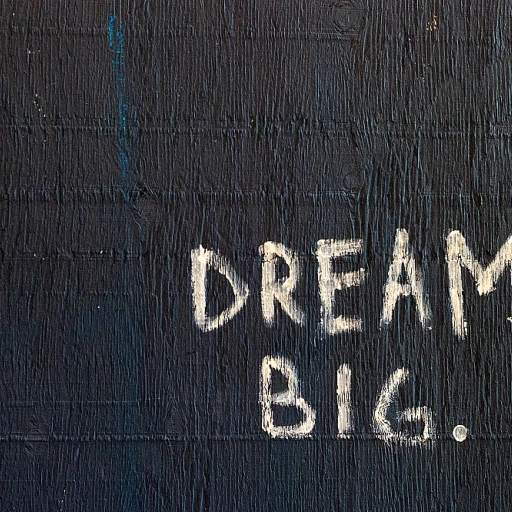Defining Organizational Culture Inventory
Understanding the Foundation of Organizational Culture Assessments
The concept of Organizational Culture Inventory (OCI) serves as a paramount tool for assessing the culture within a company. Developed by Human Synergistics, this inventory is pivotal in identifying the behavioral norms that characterize an organizational environment. Comprehending these norms is crucial for fostering a culture that prioritizes work-life balance. Organizations that engage in a thorough culture assessment are better equipped to nurture an ideal culture where both individuals and the team can thrive.
An OCI enables organizations to measure and understand their current cultural dynamics by utilizing the circumplex model, which identifies the existing cultural types and their alignment with the organization's long-term objectives. The assessment results help illuminate the gap between the current culture and the preferred culture, guiding the change process towards a more balanced organizational environment.
By leveraging an effectiveness inventory, leaders gain insights into the organizational effectiveness and the influence of existing cultural trends on employee performance. This information aids in performing a strategic culture change, enhancing both organizational effectiveness and employee satisfaction. Implementing these assessments regularly allows organizations to track their progress and refine strategies to cultivate an exemplary work-life balance.
The Relationship Between Organizational Culture and Work-Life Balance
Understanding the Complex Link Between Culture and Well-being
Organizational culture is more than just a buzzword; it’s the manifestation of the core values, norms, and expectations that shape the day-to-day interactions and overall atmosphere within a workplace. The Organizational Culture Inventory (OCI) plays a crucial role in assessing these cultural dynamics, helping organizations identify their current culture and align it with their ideal culture. The relationship between organizational culture and work-life balance is deeply intertwined. An organization with a supportive and constructive culture can positively influence its members’ ability to achieve a healthy work-life balance. This stems from the environment encouraging open communication, collaboration, and respect for personal boundaries. Such an environment fosters overall organizational effectiveness and long-term performance. However, when cultural norms emphasize excessive competition or prioritize performance over well-being, employees may struggle to maintain this balance. In such environments, the pressure to conform to these norms can lead to burnout, decreased job satisfaction, and ultimately affect organizational performance. The inventory OCI serves as a tool to assess the current cultural landscape, determining areas that may need change to better facilitate balance. As organizations explore this intricate relationship, they often rely on models like the circumplex model to visualize and understand different cultural attributes. The Human Synergistics framework and effectiveness inventory assessments offer insights into preferred cultural states that support balanced lifestyles for team members. For those navigating this complex dynamic, learning more about the responsibilities involved can shed light on strategies to improve this balance. A relevant perspective on navigating work-life balance can be found here. This insight may be especially beneficial for individuals, teams, and leadership aiming to foster an adaptable cultural change process that accommodates diverse needs without compromising organizational goals.Identifying Cultural Barriers to Work-Life Balance
Addressing Cultural Barriers to Achieve Work-Life Harmony
In the journey toward improving work-life balance, it is essential for organizations to recognize existing cultural barriers that may hinder such efforts. Often rooted in organizational norms, these barriers can interfere with the desired culture transformation. To understand these impediments, organizations may employ tools like the Organizational Culture Inventory (OCI) to assess their current culture against the ideal culture. This comparison provides insights into the prevalent behavioral norms influencing performance and employee satisfaction. Some common cultural barriers include:- Unrealistic Expectations: When organizations maintain high-pressure environments with unrealistic performance demands, it can lead to employee burnout and hinder work-life balance.
- Communication Gaps: Ineffective or hierarchical communication within a team can result in misunderstandings and misalignments with the organization’s culture and values.
- Lack of Support: Organizations that do not actively promote work-life balance through supportive policies may perpetuate a culture of overwork.
Strategies for Cultivating a Balanced Organizational Culture
Promoting a Constructive Organizational Atmosphere
To foster a work-life balance that benefits both employees and the organization, it is crucial to focus on cultivating an organizational culture that values and supports this equilibrium. Implementing strategies that align with the organization's values can create an attractive environment for current and potential team members. One effective way to begin this process is by conducting a culture assessment using tools like the Organizational Culture Inventory (OCI). This assessment can help organizations identify both the current culture in place and the ideal culture they strive to achieve. By recognizing the disparities between these two, organizations can begin the journey toward cultural change. Leadership plays a critical role in this transformation by setting an example and motivating employees to align their behaviors with the preferred cultural norms. Engaging in open dialogues about cultural expectations, and involving team members in shaping the ideal culture, can enhance commitment and assure that the changes stick long term. Encouraging collaborative discussions about the normative behaviors that contribute to work-life balance can empower employees. By promoting a culture that values organizational effectiveness without compromising personal wellness, organizations can enhance their competitiveness and employee satisfaction. Moreover, the circumplex model can serve as a valuable framework to visualize and understand the behaviors and processes that influence organizational culture. This model aids in aligning the organization's strategy with its ideal cultural attributes. In summary, it is essential for companies to actively shape their organizational norms to foster an environment where work-life balance is not just encouraged but sustained. This alignment can lead to sustainable high performance and employee well-being, contributing to the long-term success of the organization.The Role of Leadership in Shaping Culture
Leadership’s Role in Cultural Evolution
In organizations looking to achieve a harmonious work-life balance, leadership plays an indispensable role. Leaders are not just figureheads of the organization; they are the torchbearers who can influence and inspire cultural change. By understanding and assessing the current culture inventory, leaders can effectively guide their team towards an ideal organizational culture that supports balanced lifestyles. Leaders can set the tone by embodying the preferred culture themselves. When leaders exhibit behaviors aligned with the organization’s goals, such as flexibility, openness, and empathy, they reinforce these cultural norms within the team. This modeling of the ideal culture is critical in encouraging team members to adopt similar behaviors, thereby steering the organization toward effective cultural transformation. Moreover, leadership can actively engage in refining the organization’s strategy to align better with the human synergistics approach. This involves employing the proper tools, such as the Organizational Culture Inventory (OCI), to assess the current behavioral norms and compare them against the ideal culture. Through this cultural assessment, leaders gain insights into specific areas requiring change. Facilitating open communication and feedback channels is another critical responsibility of leadership. By regularly interacting with team members, leaders can identify any cultural barriers impacting organizational effectiveness and address them proactively. Leaders who foster a culture of feedback enable a continuous change process that fortifies the organization’s competitive edge while nurturing the team’s overall well-being. The commitment shown by leadership in endorsing culture change initiatives immensely impacts organizational performance in the long term. By leveraging the circumplex model to visualize the shift in cultural dynamics, leaders can maintain a clear trajectory toward achieving the organization’s vision of a balanced and productive culture. In conclusion, leadership is a pivotal force in shaping the organizational culture to support a robust work-life balance. Through active participation, transparent communication, and strategic planning, leaders can transform the organization's current cultural landscape into one that prioritizes both personal and professional well-being.Measuring Success: Evaluating Cultural Change
Evaluating the Impact of Cultural Change on Work-Life Balance
Understanding the impact of cultural change within an organization is a critical step in ensuring work-life balance. It requires utilizing tools such as the Organizational Culture Inventory (OCI) to systematically measure and assess both the current and ideal organizational culture. To evaluate the success of cultural changes, organizations should consider:- Assessing Current Versus Ideal Culture: Regular culture assessments using the OCI can help compare the current culture with the preferred culture, identifying shifts towards more balanced norms and behaviors that support work-life balance.
- Cultural Norms and Behaviors: An essential aspect of measuring success is observing changes in behavioral norms. Are team members displaying more supportive and flexible behaviors that align with the organization's ideal culture?
- Performance and Organizational Effectiveness: Organizations can gauge effectiveness by looking at performance metrics. Improved work-life balance can lead to enhanced organizational performance as employees become more engaged and productive.
- Feedback and Continuous Learning: Seeking feedback from individuals within the organization can provide insights into the changes experienced. This promotes a culture of learning and continuous improvement, allowing adjustments to be made as needed.












